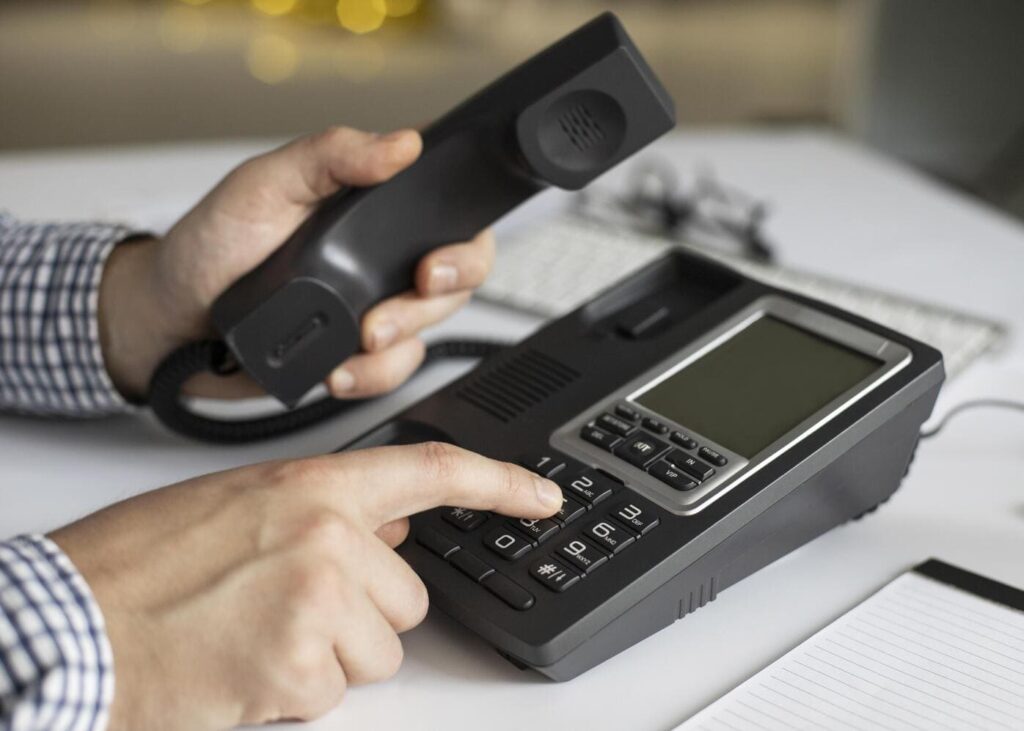General practitioners
Crafting effective answering machine messages for medical offices
Published on 18/10/2024

A well-designed answering machine message can significantly enhance the patient experience and streamline communication for medical practices. In today’s fast-paced healthcare environment, patients often rely on voicemail to communicate with their providers when they cannot reach them by phone. Therefore, it is essential for doctors to craft messages that are clear, informative, and reassuring. Here are some key tips for doctors to enhance their voicemail greetings:
1. Keep it concise but informative
Aim for a message that lasts between 20 and 30 seconds. While it’s important to provide essential information, it’s equally crucial not to overwhelm callers with excessive details. A concise message helps maintain the caller’s attention and ensures that they receive the necessary information quickly. Focus on the most critical points that patients need to know when they call.
2. Start with emergency instructions
Begin your message by directing urgent cases to appropriate resources. This is particularly important in a medical setting where patients may be experiencing anxiety or distress. For example, you might say:
“If this is a medical emergency, please hang up and dial 114 immediately.”
This statement not only prioritizes patient safety but also provides immediate guidance, ensuring that those in urgent need can quickly access the help they require.
3. Identify the practice and doctor
Clearly state the name of your practice and the doctor’s name to confirm that callers have reached the correct office. This is especially important for patients who may be calling for the first time or who might be uncertain about whether they have dialed the right number. You could say:
“You’ve reached Dr. Jane Doe’s Family Medicine Clinic.”
This simple introduction helps establish trust and reassurance, letting patients know they are in the right place.
4. Provide office hours and alternative contact methods
Mention your office hours clearly in the message so patients know when they can expect a response. Additionally, offering alternative ways to reach out can enhance patient satisfaction. Ideally, you can provide your patients with an online booking solution; that way they can directly book an appointment, and you minimize the risk of them calling another practitioner.
For example: “Thank you for calling; we’re currently assisting other patients. If you want to book an appointment, we invite you to do so on OneDoc or on our clinic’s website: www.drjanedoeclinic.com.
If you don’t offer online booking, you can give your patients an alternative way to reach you, like an email address.
5. Set expectations for response time
Let callers know when they can expect a return call. Clear communication about response times helps manage patient expectations and reduces anxiety about waiting for important information. You could say:
“We return all non-urgent messages within one business day.”
This statement reassures patients that their concerns will be addressed promptly while allowing them to understand that urgent issues should be handled differently.
6. Offer guidance for leaving messages
Instruct callers on what specific information you would like them to leave in their messages. This can help streamline communication and ensure that you have all the necessary details to assist them effectively:
“Please leave your name, phone number, and a brief description of your reason for calling.”
By guiding patients on what to include in their messages, you make it easier for them to communicate their needs clearly.
7. Consider time-specific messages
Using different messages for after-hours, weekends, or holidays can provide relevant information tailored to a specific time. This allows patients to understand the reason why they can’t reach you.
“Thank you for calling Dr. Doe’s office. We are currently closed for the holiday weekend and will reopen on Tuesday at 9 AM.”
This approach keeps patients informed about when they can expect a response based on their call time.
Examples of effective answering machine message
Example 1: standard office hours message
“Thank you for calling Dr. Jane Doe’s Family Medicine Clinic. If this is a medical emergency, please hang up and dial 911 immediately. Our office is open Monday through Friday from 9 AM to 5 PM.
We’re currently assisting other patients; if you want to book an appointment, we invite you to do so on OneDoc or on our clinic’s website: www.drjanedoeclinic.com.
If you call for another matter, please leave name, number, and a brief message; we’ll return your call within one business day. Thank you for your patience.”
Example 2: After-Hours Message
“Thank you for calling Dr. Jane Doe’s Family Medicine Clinic. Our call center is currently closed and will open again at 9 AM tomorrow morning. If this is an emergency, please hang up and dial 911 or go to the nearest emergency room. If you need to speak with the on-call physician for an urgent matter, please press 1 now.
If you want to book an appointment, we invite you to do so on OneDoc or on our clinic’s website: www.drjanedoeclinic.com.
For other matters, please leave your name, number, and a brief message, and we’ll return your call during the next business day.
Thank you for calling Dr. Jane Doe’s Family Medicine Clinic.”
By implementing these simple strategies into your voicemail systems, you can receive both professional and patient-friendly messages, ensuring clear communication even when staff are unavailable to answer calls directly. This will enhance the patient experience and ensure efficient communication with them.



